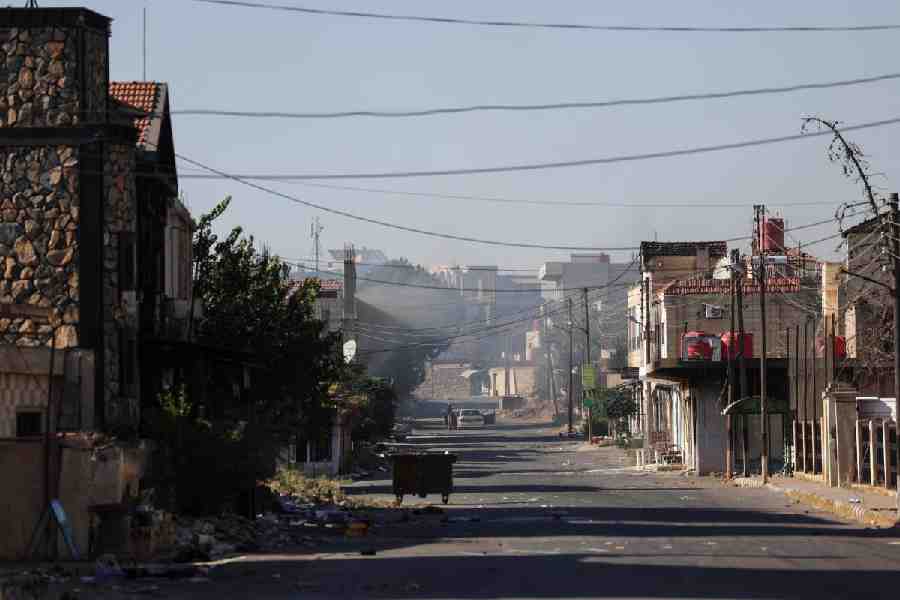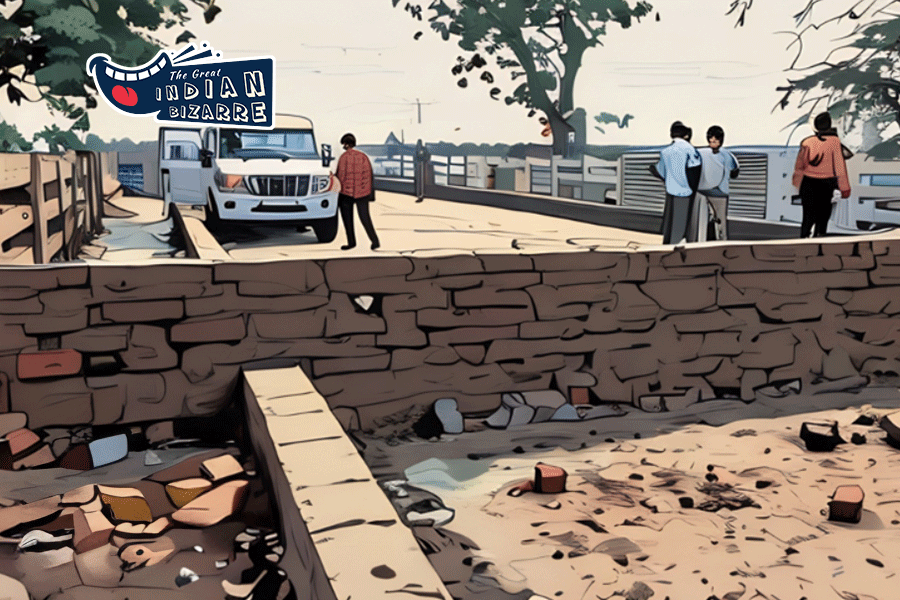 |
| A visitor takes a look at the displayed artwork in Ranchi on Friday. Picture by Hardeep Singh |
An exhibition of Madhubani paintings and handicraft is showcasing, among other things, innovative use of sikki grass at Bihar club complex on Kutchery Road in Ranchi.
The exhibition, organised by Shilipika — an NGO that promotes Madhubani artisans of Ghiwahi village in Bihar’s Madhubani district — and sponsored by development commissioner (handicraft, Union ministry of textile) opened on Friday.
Though the event, which will continue till March 16, has on display silk saris with Madhubani designs, traditional sikki items and Madhubani paintings, the sikki art pieces caught everyone’s attention.
Produced by Rachna Sikki Hastkala Kendra of Rampur of Madhubani district, the art pieces, which were never exhibited before on this platform, are made of finely cut sikki grass pasted on handmade papers and mounted in attractive frames.
They are innovative and depict various rural scenes or portraits of Buddha or Radha-Krishna. The price ranges between Rs 400 and 12,000.
“All these are made only by me and those I train,” claimed Dhirendra Kumar of Rampur (Madhubani), who runs Rachna hastkala kendra there.
Traditional Madhubani paintings are connoisseurs’ delight with the prices varying between Rs 40 (for a postcard size painting) and Rs 3,000.
“We still use indigenous colours made from rice, plants and flowers besides such ingredients as turmeric and draw with pens with nibs or small sticks with pointed tips,” said Usha Devi a painter.
“We take up to 15 days to complete a painting,” added fellow artisan Gangeyi Devi.
“We have been promoting these artisans by taking their work to various places for marketing,” said Vijay Jha, secretary of Shilpika.
Traditional items from sikki grass are available between Rs 300 and Rs 500 while silk saris with designs of Madhubani paintings will set one back by Rs 5,500-Rs 7,500. Silk scarves of same kinds cost Rs 1,000-Rs 1,500.
“Everything is very attractive here, but I never saw such great quality sikki artwork before,” said Rekha Sinha, one of the early visitors.











